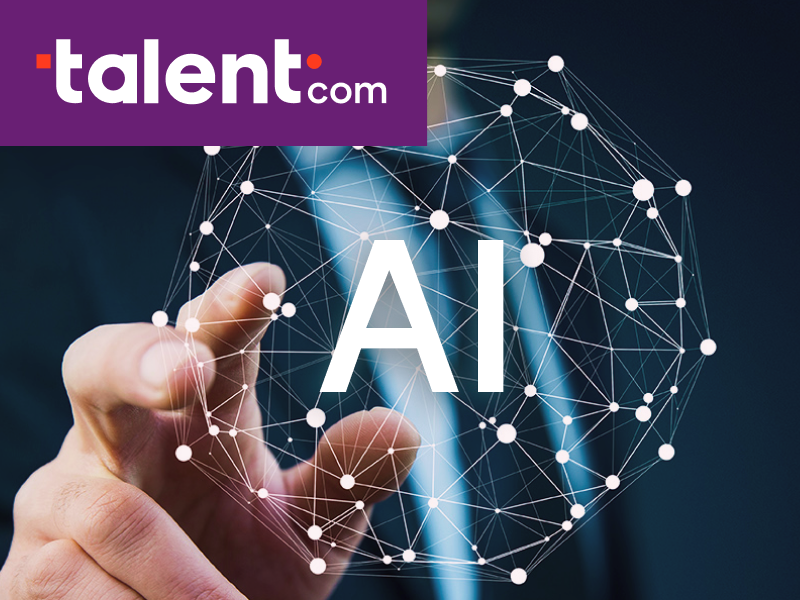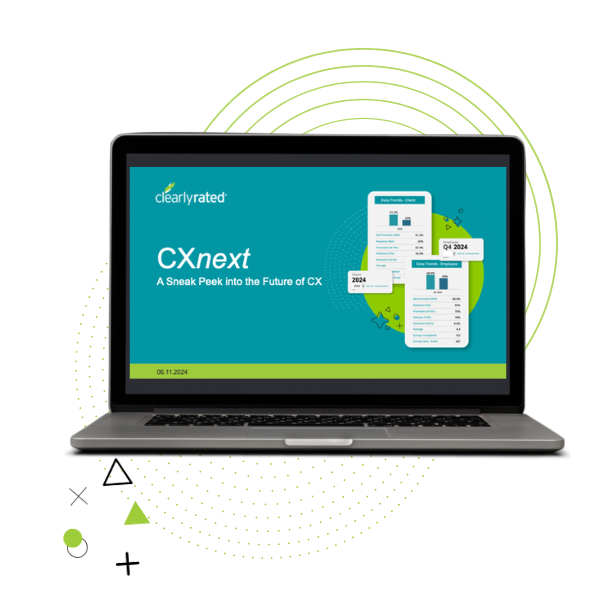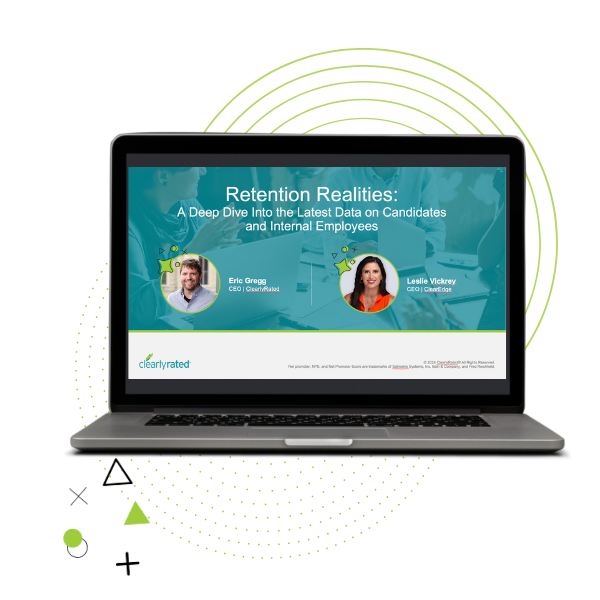
The COVID-19 pandemic has affected the recruitment marketing industry in unprecedented ways. With remote work policies now being the norm, companies have had to adapt their activities and habits to accommodate employees, customers and partners in the safest way possible. And as the demand increases for certain industries, other sectors are struggling to stay afloat.
Amid all this change and uncertainty, recruiters are looking to maximize their ROI and acquire high quality talent with the most efficient tools and technology. This article will outline key focus areas for staffing and recruiting firms to consider as they make decisions about their technological investments in 2021. Specifically, we will be taking you behind the scenes of AI-powered recruitment, through the lens of Talent.com’s tools and features.
Talent.com is a global career platform helping both candidates get job opportunities and recruiters reach out to them through optimized campaigns. This article will educate you on how your technological investments can:
- Create an unmatched candidate experience that delivers job searches tailored to each individual
- Arm recruiters with comprehensive, customizable analytics to more efficiently reach candidates and make decisions
- Empower you with deep expertise and a knowledgeable team of Account Managers and Data Analysts
1. A Seamless Candidate Experience
The candidate experience is at the heart of the recruitment process. Job seekers will form an opinion of a company based on how smooth and efficient the application process feels to them. Their expectations create a need for any recruitment touchpoint to be a seamless one. And it all starts with helping them search for the right job.
How does the job search engine work?
On Talent.com, search results are generated with the help of automated programs called spiders or crawlers. These intricate bots compile job listings from various sites, such as job boards, company career pages and staffing agencies’ websites. This produces a vast, constantly updated index of heterogeneous job listings from all levels and industries. Any job seeker can then enter the keywords of his or her choice into the search bar and get customized results.
How are search results determined?
Search results are impacted by factors such as geolocation and relevancy, with sponsored offers appearing first. Geolocation, and other information, is gathered when users are invited to create a profile. The information in their profiles helps shape the job search. Relevancy is based on their previous interactions with the site. Their clicks and job views reveal information which is then used to customize their job results. Consequently, the same keyword will yield different results based on who is searching it.
The algorithms also learn over time and become better at serving each profile as they accumulate more information. Based on previous user data (clicks), user profiles are built by AI Specialists with collaborative filtering techniques to help further increase relevance in job searches.
Anatoly Khomenko, who’s been working as a Machine Learning Engineer at Talent.com for two years, shares how pattern recognition helps determine which jobs appear first:
“Collaborative filtering is a machine learning technique which allows us to understand how similar two users are. If they have similar profiles, we can deduce that if User A likes something, User B will also like it. Basically, we draw conclusions out of multiple user profiles and how they interact with our jobs, namely their clicks.”
How are prospective candidates being nurtured?
The aforementioned techniques are used not only in search results but also in job alerts. This means that once a user has applied for a job on the website, they will receive customized notifications of similar jobs. These job alerts, which are curated to match each job seeker’s skill set and career goals, are sent via email or SMS, depending on personal preference and the location of the candidate.
What does this mean for my business?
As seen above, user-centric algorithms help make the early candidate experience a customized and seamless one. With customized results, insightful nurturing strategies and a user-friendly interface, applicants have all the tools they need to find the job that’s right for them.
Keeping the platform’s efficiency as top priority, Machine Learning Engineers perform testing of the algorithms to ensure they are constantly optimized for the best candidate experience. Long gone are the days of traditional job posting; recruitment marketing is evolving at a very fast pace. In such a competitive environment it is important to take advantage of new technologies such as AI and automation.
2. Time-Efficient Recruitment
Now that we’ve detailed how algorithms enhance the candidate experience, let’s discover what they can do for businesses looking to fill a position.
Automatic Categorization
Talent.com boasts over 30 million available jobs worldwide. However, not all of these jobs are unique positions. Many jobs, while entailing the same responsibilities, have different titles, depending on the region or the company.
In order to help standardize job descriptions, the Talent.com platform relies upon exhaustive job classification databases, namely O*NET for North America and ESCO for Europe. These existing databases help identify and categorize the skills, competencies and qualifications that are relevant for each job.
Data Scientists use these recognized tools to create automatic keyword detection algorithms. These algorithms help relevancy in job ads through suggestions. Not only is this feature a major time-saver, it also acts as a uniformization tool and helps bridge the gaps between job seekers and job offers, especially in cases where language discrepancies might occur. What’s more, as the job database increases in volume, our tools develop and adapt using ever-changing natural language processing techniques.
Advanced Analytics
In this constantly changing world, filled with technological developments and raging competition, it is important for recruiters today to keep an eye on their budget and their campaigns at all times. On Talent.com, recruiters enjoy transparency in the form of total access and control over their own data and performance metrics through a comprehensive dashboard.
The comprehensive dashboard enables recruiters to:
- See the progress of their clicks and budget allocations
- Find out exactly how people interact with job postings over time, whether that be through job alerts, direct traffic, or via targeted networks
- Manage, search, export and rank their candidates
- Group jobs together, whether sponsored or not, for increased efficiency. For example, jobs can be categorized by geolocation or priority level, depending on company needs.
Multi-channel adaptation
Whether or not you are already using an ATS for your recruitment needs, you can reap the benefits of flexibility when it comes to application methods. The Talent.com platform can adapt to your existing recruitment protocols and redirect candidates to your internal platform or ATS – its level of involvement in the application process is up to you.
The whole application process can also take place on Talent.com, with the help of useful features designed to improve application rates. For example, the “Quick Apply” button allows candidates to apply to jobs directly on the website using their existing profiles. Screening questions, such as “What is your highest education level?” can also be placed at the beginning of any application process to help filter candidates faster.
3. The People Who Make It Work
As detailed above, artificial intelligence helps both candidates and recruiters find what they are looking for in a more insightful and efficient manner. With that being said, the best results are achieved when humans and technology work hand-in-hand, so let’s talk about the people whose expertise makes it all come together.
Talent.com’s team of Account Managers and Performance Analysts guide and inform recruiters throughout their candidate search. They give personalized, context-sensitive advice that the machine is not able to give with confidence. And they make sense of the advanced analytics and data visualizations provided by the platform with the aim of constantly enhancing job campaigns.
A great AI-powered job search engine is best supported by a team of trustworthy professionals with a deep comprehension of recruitment marketing and a willingness to share this knowledge with businesses to help them attract candidates and reach their goals.
Conclusion
The future of recruitment marketing will be built by machines and humans working alongside one another to optimize job campaigns, with adaptability remaining a top priority for talent acquisition specialists.
As we have seen, the candidate experience is enriched by customized search results and targeted alerts meant to nurture prospective candidates. Also, recruiters can save time and money by making good use of solutions that leverage machine learning and automation. When these solutions display a high focus on results and transparency of data, recruiters can focus on what they do best: connecting talented people with the right opportunities.
Visit Talent.com to be at the forefront of recruitment technology innovation.




